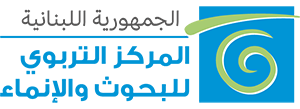INTRODUCTION
The purpose of this document is to establish curriculum guidelines to teach informatics as a new instructional subject. It emphasizes teaching the most common computer skills and concepts, and encourages the use of computers in teaching/learning other subjects.
This new curriculum draws on known international and local experiences in the area of computer education, and is in line with the principles of the Educational Reform Plan set by the National Center for Educational Research and Development.
Since informatics is an evolving subject and unique in its need for equipment, teaching should take place in computer labs to emphasize practice in building concepts and knowledge.
- To develop positive attitudes toward computer, and reinforce student’s self-confidence through the efficient use of this technology.
- To value the educational and economic role of the computer as well as its function in facilitating communication.
- To interact with other cultures and civilizations through various programs and computer networks.
- To develop creativity, logical thinking, problem solving, and analysis abilities through programming.
- To recognize the uniqueness of the computer as a programmable machine which can perform specific tasks upon the user’s orders.
- To acquire basic computer concepts and their use in various cultural, industrial, and commercial domains.
- To acquire information management skills: navigating through information, sending, receiving, storing, and retrieving it.
- To acquire database management techniques.
- To use the computer efficiently and to manipulate its peripherals for various purposes.
- To acquire the basic computer skills needed in the labor market.
|
Niveau |
Basic Education |
Secondary Education |
||||||||||||||
|
Elementary Level |
Intermediate Level |
|||||||||||||||
|
Cycles |
First Cycle |
Second Cycle |
|
1st |
Second Year |
Third Year |
||||||||||
|
School Year
|
1st |
2nd |
3rd |
4th |
5th |
6th |
7th |
8th |
9th |
Year |
Humanities |
Sciences |
Literature & Humanities |
Sociology & Economics |
General Sciences |
Life Sciences |
|
Weekly Periods
|
|
|
|
|
|
|
1 |
1 |
1 |
1 |
1 |
1 |
1 |
1 |
1 |
1 |
|
Yearly Periods
|
|
|
|
|
|
|
30 |
30 |
30 |
30 |
30 |
30 |
30 |
30 |
30 |
30 |
BASIC EDUCATION - INTERMEDIATE LEVEL
- Acquainting the learner with the computer, its main components and functions.
- Developing keyboard and mouse skills as well as simple file management, electronic drawing, and typing.
- Developing word processing concepts and skills to perform school and personal tasks, and to acquire useful skills for later professions.
- Using spreadsheet techniques to organize data and perform arithmetic and statistical applications suitable for the students’ level.
- Searching for, retrieving, and demonstrating various types of information extracted from computer multimedia applications.
- Practicing simple programming to experience the potential of the computer as a programmable machine that helps in developing problem-solving skills.
|
Grade Level |
7ème année |
Time |
8ème année |
Time |
9ème année |
Time |
|
Subject |
||||||
|
1. Computer Components
|
· Utility and types of computers. · Basic computer components. |
2 |
· Memory. · The Central Processing Unit (CPU). · Peripherals: printer and scanner.
|
2 |
|
|
|
2. Operating System |
· Operating system environment. · Windows handling. · Files and folders. |
4 |
· Types of files. · Manipulating programs. · Customizing desktop. · Formatting disks.
|
4 |
· Print management. · Disks diagnosis and files maintenance. |
2 |
|
3. Word Processing |
· Word processing environment. · Parts of a text. · Manipulating documents. |
8 |
· Style. · Page setup and Print Preview. · Table. |
6 |
· Templates. · Columns. · Improving editing productivity.
|
6
|
|
4. Electronic Drawing |
· Environment of the electronic drawing software. · The drawing and coloring tools. · Drawing projects. |
4 |
· Design principles. · Inserting text into drawing. · Modifying an existing drawing. · Drawing projects.
|
4 |
|
|
|
5. Spreadsheet |
|
|
· Spreadsheet environment. · Worksheet. |
6 |
· Page setup and Print Preview. · Workbook. · Charts. · Simple statistical applications.
|
8 |
|
6. Programmation * |
· Programming environment · Fundamental instructions · Repetition statement · Arithmetic operators (+,-,*, / ) · Simple Procedures · The Editor
|
12 |
· Words and Lists · Variables · Procedures with variables · Procedures management |
8 |
· Interactive programming · Logical operators (NOT, AND, OR) · Conditional statement (If ...Then) · Applications: constructing interactive programs.
|
8 |
|
7. Les techniques de présentation d’informations |
|
|
|
|
· The presentation software environment. · Selecting a model for the presentation. · Inserting multimedia elements in the presentation. · Running a presentation. · Students Projects.
|
6 |
|
Number of Periods |
|
30 |
|
30 |
|
30 |
* Remark: The programming curriculum for the intermediate level was designed according to the basic concepts of LOGO programming language. Other programming language(s) may be adopted in the future if they prove to be more adequate while maintaining similar concepts.
CONTENT |
|
1. Computer Components
- The screen - The keyboard - The mouse - The disks 2. Operating System
- Programs - Desktop - Accessories
- Switching between windows. - Moving and sizing windows.
- Browsing files. - File manager. 3. Word Processing
- The default menu. - The toolbars.
- Selecting parts of a text. - Editing a text. - Insertion of text and pictures.
- Using the spelling checker. - Printing documents. - Creating and saving documents.
|
4. Electronic Drawing
- The default menu. - The Toolbox.
- The drawing tools. - Selecting shapes of the drawing tools. - The color palette.
5. Programming
- Instructions for controlling the screen. - Basic instructions in the interactive mode. - Producing and printing drawings.
- Notion and utility of the repeat instruction. - Parameters and syntax of the repeat instruction.
- The four basic operations. - Priorities and use of parentheses.
- Syntax and execution of procedures. - Subprocedures.
- Introducing the editor. - Managing the procedures library. - Saving and loading files from the editor. |
CONTENT |
|
1. Computer Components
- Memory and storage. - Types of memory. - Common storage devices.
- printer: Function and common types. Connection computer-printers. - Scanner: Functions and uses. Connection computer-scanner. 2. Operating System
- Executable files. - Text files. - Graphic files.
- Installation of programs. - Running programs.
- Shortcuts. - Screen saver.
3. Word Processing
- Applying style to text. - Indentation.
- Setting the pages. - Margins. - Header and footer.
- Creating a table. - Editing within a table. - Formatting a table.
|
4. Electronic Drawing
- Balance between elements. - Kinds of design.
5. Spreadsheet
- The default menu. - The toolbars.
- Editing. - Formulas. 6. Programming
- Syntax for printing words and lists. - Applications: typing short texts and captions for graphics.
- Notion and types of variables. - Assignment primitive.
- Syntax of procedures with variables. - Executing procedures with variable(s). - Subprocedures with variable(s).
- Listing, modifying, and erasing procedures. - Saving, loading, and deleting files.
|
CONTENT |
|
1. Operating System
- Defragmentation - Scandisk 2. Word Processing
- Formatting a document using a template. - Style Gallery
- Dividing a page into columns. - Setting columns number and width.
- Finding and replacing text. - Automatic insertion (Autotext). - Automatic correction. 3. Spreadsheet
- Page setup. - Print area.
- Relative and absolute reference. - Sheet handling within a workbook.
|
4. Programming
- Running and interpreting a ready-made interactive program. - Notion of interactive programming. - Function and use of the instructions for data entry.
- TRUE or FALSE values of statements. - NOT, AND, and OR operators.
- Function and components of the conditional statement. - Use of the conditional statement. - The STOP primitive.
5. Electronic Presentation Techniques
- The default menu. - The toolbars.
- Selection of an existing model. - Modification of display characteristics. - Inserting texts.
- Selecting images from different sources. - Inserting tables, sounds, and graphic charts.
- Manual presentation. - Programmed presentation.
|
SECONDARY EDUCATION
1. Objectives Common to all Sections and Years:
- Using database management techniques to organize data, filter it, classify it, and produce meaningful reports out of it.
- Producing applications that combine various types of information using multimedia techniques.
- Acquaintance with communication network tools and their benefits.
2. Objectives specific to Humanities Sections:
- Acquaintance with modern programming techniques.
- Applying advanced spreadsheet and word processing techniques.
3. Objectives specific to Sciences Sections:
- Practicing modern programming techniques to enhance problem solving and decision making capacity.
|
LITERATURE AND HUMANITIES |
||||||
|
|
||||||
|
Grade Level |
First Year |
Time |
Second Year |
Time |
Third Year |
Time |
|
Subject |
|
|
- Humanities - |
|
- Literature & Humanities - |
|
|
1. Programming *
|
· Computer programming and problem solving. · Programming environment. · Program structure and elements. · Simple programming applications.
|
18 |
|
|
|
|
|
2. Database
|
· Database concepts. · DBMS environment · Table structure. · Manipulating an existing table. · Sorting and filtering data. · Creating a table. · Creating simple forms.
|
10 |
· Creating simple reports. · Creating simple queries. · Index. · Using OLE. · Applications. |
14 |
· Relating tables. · Creating subforms. · Joint table queries. · Complex and parameter queries. |
10 |
|
3. Multimedia |
|
|
· Sound production and editing. · Techniques of producing multimedia electronic presentations. · Students Projects.
|
12 |
· Hypermedia. · Producing interactive Hypermedia presentations. |
10
|
|
4. Network Communication |
|
|
· Network concepts. · Internet. · Electronic mail.
|
4 |
· Internet services. · Internet research techniques |
2 |
|
5. History of Computers |
· Important developments in the history of the computer.
|
2 |
|
|
|
|
|
6. Word Processing and Desktop Publishing |
|
|
|
|
· Designing and producing a simple publication. |
8
|
|
Total Number of Periods |
|
30 |
|
30 |
|
30 |
|
SOCIOLOGY AND ECONOMICS |
||||||
|
|
||||||
|
Grade Level |
First Year |
Time |
Second Year |
Time |
Third Year |
Time |
|
Subject |
|
|
- Humanities - |
|
- Sociology & Economics - |
|
|
1. Programming
|
· Computer programming and problem solving. · Programming environment. · Program structure and elements. · Simple programs.
|
18 |
|
|
|
|
|
2. Database |
· Database concepts. · DBMS environment. · Table structure. · Manipulating an existing table. · Sorting and filtering data. · Creating a table. · Creating simple forms.
|
10 |
· Creating simple reports. · Creating simple queries. · Index. · Using OLE. · Applications. |
14 |
· Relating tables. · Creating subforms. · Joint table queries. · Complex and parameter queries. |
10 |
|
3. Multimedia |
|
|
· Sound production and editing. · Techniques of producing multimedia electronic presentations. · Students Projects.
|
12 |
· Interactive Hypermedia. · Running interactive Hypermedia presentations. |
10
|
|
4. Network Communication |
|
|
· Network concepts. · Internet. · Electronic mail.
|
4 |
· Internet services. · Internet research techniques. |
2 |
|
5. History of Computers |
· Important developments in the history of the computer.
|
2 |
|
|
|
|
|
6. Statistical and Administrative Applications |
|
|
|
|
· Executing a project using the built-in spreadsheet statistical functions.
|
8
|
|
Total Number of Periods |
|
30 |
|
30 |
|
30 |
|
GENERAL SCIENCES AND LIFE SCIENCES |
||||||
|
|
||||||
|
Grade Level |
First Year |
Time |
Second Year |
Time |
Third Year |
Time |
|
Subject |
|
|
- Sciences - |
|
General & Life Sciences |
|
|
1. Programming *
|
· Computer programming and problem solving. · Programming environment. · Program structure and elements. · Simple programming applications.
|
18 |
· Programming techniques: comments, scrolling, dialog boxes, menus. · Loops and decision statements. · Students’ projects. |
16 |
· Programming techniques: graphics, multimedia, OLE. · Students’ projects. |
18
|
|
2. Database |
· Database concepts. · DBMS environment · Table structure. · Manipulating an existing table. · Sorting and filtering data. · Creating a table. · Creating simple forms.
|
10 |
· Creating simple reports. · Creating simple queries. · Index.
|
10 |
· Relating tables. · Creating subforms. · Joint table queries. · Complex and parameter queries. |
10 |
|
3. Network Communication |
|
|
· Network concepts. · Internet. · Electronic mail.
|
4 |
· Internet services. · Internet research techniques. |
2 |
|
4. History of Computers |
· Important developments in the history of the computer.
|
2 |
|
|
|
|
|
Total Number of Periods |
|
30 |
|
30 |
|
30 |
Remark: The programming curriculum for the secondary level was designed according to the basic concepts of MS Visual Basic 4.0. Other programming language(s) may be adopted in the future if they prove to be more adequate while maintaining similar concepts.
CONTENT |
|
1. Programming
- Strategies of problem solving. - Simple flowchart.
- The basic elements of the main menu. - The help system.
- Components of a program. - Procedures.
- Code generated by the system. - Code entered by the user. - Variables. - Arithmetic operators. 2. Database
- Basic database concepts. - Basic DBMS concepts.
- Record. - Field.
|
- Opening a table. - Changing field values. - Reports displaying
- Quick sort. - Filtering by selection.
- The design process. - The creating process. - Changing a table design.
- Automatic creation of a form. - Creating a form with form Wizards. 3. Computer History
- Pre-computer stages. - Beginnings of automatic calculator. - The four computer generations. - Computer today.
|
CONTENT |
|
1. Database
- Creating an automatic report. - Creating reports with wizards.
- Research criteria. - Creating selection queries. - Modifying a query’s description.
- Creating an index. - Deleting an index.
- OLE types. - Inserting OLE objects in a field, form, and report.
|
2. Multimedia
- Creating sound files. - Manipulating sound files.
- Students projects. 3. Network Communication
- Internet history. - Internet services. - Internet and education.
- Utility of electronic mailing. - Sending and receiving messages.
|
CONTENT |
|
1. Programming
- Comments. - Scrolling. - Dialog Boxes. - Menus.
- Conditional statements IF... THEN... ELSE - Loops FOR... NEXT
2. Database
- Creating an automatic report. - Creating reports with wizards.
- Research criteria. - Creating selection queries. - Modifying query’s description.
- Creating an index. - Deleting an index.
|
3. Network Communication
- Internet history. - Internet services. - Internet and education.
- Utility of electronic mailing. - Sending and receiving massages.
|
CONTENT |
|
1. Database
- One to many relation. - Manipulating data in linked tables.
- Creating subforms with the form wizard. - Changing the display of a subform.
2. Multimedia
|
3. Network Communication
- Information research. - Files transfer.
4. Word Processing and Desktop Publishing
|
CONTENT |
|
1. Database
- One to many relation. - Manipulating data in linked tables.
- Creating subforms with the form wizard. - Changing the display of a subform.
2. Multimedia
|
3. Network Communication
- Information research. - Files transfer.
4. Statistical and Administrative Applications
|
CONTENT |
|
1. Programming
- Graphics. - Multimedia - OLE
2. Database
- One to many relation. - Manipulating data in linked tables.
- Creating subforms with the form wizard. - Changing the display of a .
|
3. Network Communication
- Information research. - Files transfer.
|






